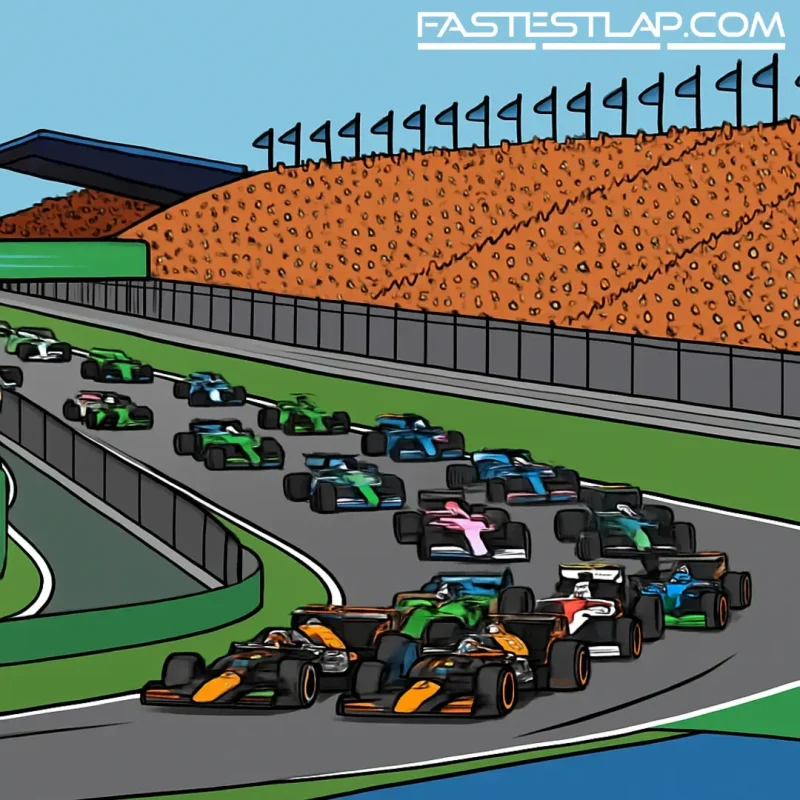FIA parks early engine reset talk: Tombazis says 2026 hybrids will run the full course
The much-hyped London summit that was expected to float an early pivot away from Formula 1’s incoming 2026 engine rules didn’t happen — and that’s the point. The FIA has cooled the chatter, parked the politics, and made it clear the next power unit cycle will run to 2030 as planned.
Nikolas Tombazis, the FIA’s single-seater director, confirmed a meeting slated for September 11 with power unit manufacturers was postponed once it became obvious there wasn’t enough consensus to justify forcing such a seismic change midstream.
“The regulations are a five-year cycle and, therefore, I think it means that any changes to that have to receive a very broad consensus,” Tombazis told PlanetF1 after the postponement. “It became apparent that there wasn’t going to be enough consensus, and, clearly, it would be wrong to strong-arm a situation when people have made significant investments in a certain cycle of regulations.”
That’s the underlying tension. Next year’s new hybrid era, still anchored by a 1.6-litre V6 but with sustainable fuels and a far bigger electrical hit, has been designed as an integrated package. The chassis and aero rules have been written around the power unit’s characteristics — the first time F1’s ever done it this way — with active aerodynamics drafted in to keep performance up as the power split heads toward a near 50/50 between combustion and electrical systems.
Against that backdrop, FIA President Mohammed Ben Sulayem kicked off a working group earlier this year to explore a lighter, simpler engine future, including a cost-effective return to naturally aspirated concepts. The idea — at least in exploratory terms — was to consider whether F1 could step off the 2026 train a year or two early and land something new for 2029 or 2030.
But the room wasn’t aligned. Of the five manufacturers on the grid for 2026, Audi and Honda were most insistent that the new cycle runs in full, matching their broader electrification and technology strategy. The others — Ford/Red Bull Powertrains, Mercedes, and Ferrari — were more open to a lower-electrification concept, with General Motors’ planned arrival in 2029 also factored into the conversation. Without a supermajority, the FIA hit pause.
Practically, that means no V8 revival, or any alternative, before 2031 at the earliest. Philosophically, it signals that F1 wants to see the 2026 vision play out on track before anyone reaches for the ripcord.
For Tombazis, the timing of these talks — happening even before the new hardware has run a racing lap — is not a vote of no confidence. It’s logistics.
“Because the design of a power unit is a very lengthy process and very time-consuming,” he said when asked why the FIA was entertaining future ideas so early. “That is not, in any way, to say that ’26 isn’t what it needs to be… but what we are going to be having in the future is something that has to be put on the table quite early on in order to then allow people to plan their investments.”
That last word matters. With cost caps in force, any dramatic swing in philosophy needs years of runway. Suppliers are already deep into 2026 development — and teams are designing cars around it. Whatever comes after is a blank sheet that can’t be left blank for long.
So what might 2031 look like? If the engine brief trends simpler, do the cars follow? Do we still need active aero if the power unit isn’t doing so much of the heavy lifting? Ground-effect versus overbody downforce? Too early, says Tombazis, but he does hint at the direction of travel.
“I don’t want to prejudge future cars, because engines plus chassis have to be done in the same sort of batch of philosophical setting of objectives and performance targets,” he said. “But the objective is that Formula 1 needs to continue the cost reduction across the board. We can’t rest on our laurels.”
Between the lines, this is F1 choosing stability now to protect flexibility later. The 2026 package is a bold, integrated bet — electrification dialed up, sustainable fuel front and center, aero built to match. Tearing it up early would have been a political win for some and an economic headache for most.
Instead, the sport has drawn a line: run the five-year cycle, do the homework for 2031, and don’t make promises the paddock can’t afford to keep. In other words, no quick fix, no nostalgia rush — just the long game.




